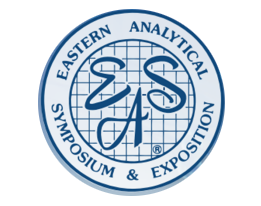One-Day Course
Tuesday, Nov. 15; 8:30am – 5:00pm
Dr. James Rydzak, Specere Consulting, Old Bridge, NJ
COURSE DESCRIPTION
Process analytical technology (PAT) is a tool for product development, scale up and manufacturing of any chemical product. In this course, you will learn about the benefits of in-process monitoring, how to justify and plan the analysis implementation. Different process analytical tools will be discussed, how to implement them and how to choose between them for your application. How to use PAT to save time and money, improve your green scores in development and manufacturing become proficient at PAT will be discussed. Various applications, from various industries will be used to explain concepts and provide examples of implementation.
WHO SHOULD ATTEND
This course is suited for managers, analytical chemist, engineers and those who want to implement process analytical measurements. It is suited for R&D, Pilot plant and manufacturing chemists and engineers.
TOPICS
- What is Process Analytical Analysis?
a. What are the benefits and the green benefits?
b. Why do In-Process or process analytical measurements?
Risk Analysis
Planning for success
c. Justification of in-line monitoring
Development phase
Near-line analysis
On-line analysis
d. Levels of implementing PAT and documentation implications for GMP
e. Process Capability and in-line measurements - What is the Technology use for PAT?
a. Mid-IR, near-IR, Raman
b. Ultra-violet, mass spectrometry and others - Chemometrics Overview: Finding chemo
- Applications
a. Liquid phase: Reaction chemistry, crystallization and form analysis, formulation
b. Solid phase: Blending, coating, flow chemistry, continuous manufacturing - How do you Choose the Technology to Use?
a. Problem analysis; What is the best tool for the job?
b. Process constraints
c. Probe technology - Methods
a. Qualitative analysis: Resolution, pass/fail analysis
b. Quantitative analysis: Implications for the measurement, signal to noise and effect on analysis, choosing measurement parameters - Summary and Reference Articles

ABOUT THE INSTRUCTOR
Jim Rydzak is currently an independent consultant, founder of Specere Consulting. Jim was previously a team leader and Sr. Investigator who was responsible for the formation of the Process Analytical group at GSK and previously at Colgate Palmolive. Jim was a founding member of the ASTM E55 committee which was founded originally to develop standard for Process Analytical Technology (PAT). Jim joined the spectroscopy group at GlaxoSmithKline (GSK), and organized a global GSK PAT organizational meeting, later becoming the PAT team leader. Jim also started the PAT group at Colgate-Palmolive, where he worked prior to joining GSK for 16 years, first as molecular spectroscopists, then starting the Process Analytical Group. Jim’s background in FT-IR, Raman, NIR spectroscopy and chemometrics led him into the field of Process Analytical.
Jim got his B.S. in Chemistry from Mount Union College in Alliance, Ohio and his M.S. in Analytical Chemistry working for Peter Griffiths at Ohio University. Jim has taught short courses in molecular spectroscopy with for the Center for Professional Advancement for eight years in Amsterdam and New Jersey. Jim has also taught the short course entitles “Process Analytical Chemistry: Out of the Lab and into the Pipes” on PAT at the Federation of Applied Chemistry and Spectroscopy Societies (FACSS/SciX) conference for eight years.
Jim is active in presenting at and organizing the PAT sessions at the FACSS/Scix and EAS analytical conferences He has run a PAT Networking session at PITTCON for several stints totally over 10 years. In February 2015, ASTM published a Guidance standard for the Validation of PAT Applications that Jim had co-authored and led through the ASTM consensus voting process. Jim has also authored a number of technical papers. His most recent was entitled “Real-Time Process Analytical Technology Assurance for Flow Synthesis of Oligonucleotides”, published in Organic Process Research & Development, (Org. Process Res. Dev., 2015, 19 (1), pp 203–214). He also contributed to a review article on PAT entitled “Assessment of Recent Process Analytical Technology (PAT) Trends: A Multi-author Review”, also in Organic Process Research & Development (Org. Process Res. Dev., 2015, 19 (1), pp 3–62).

